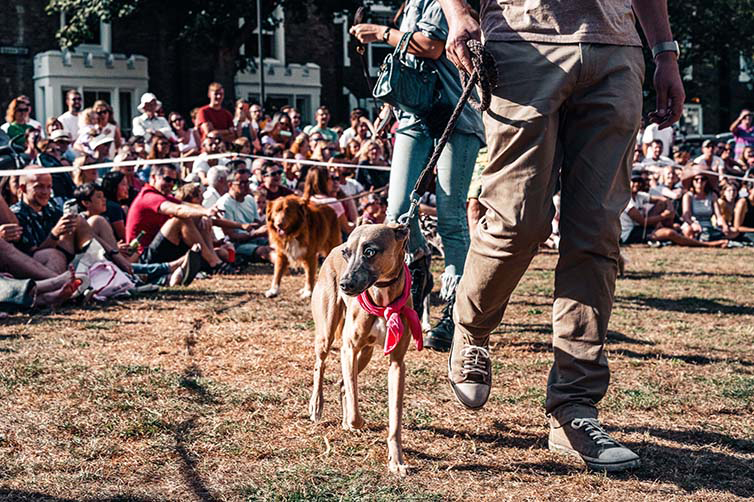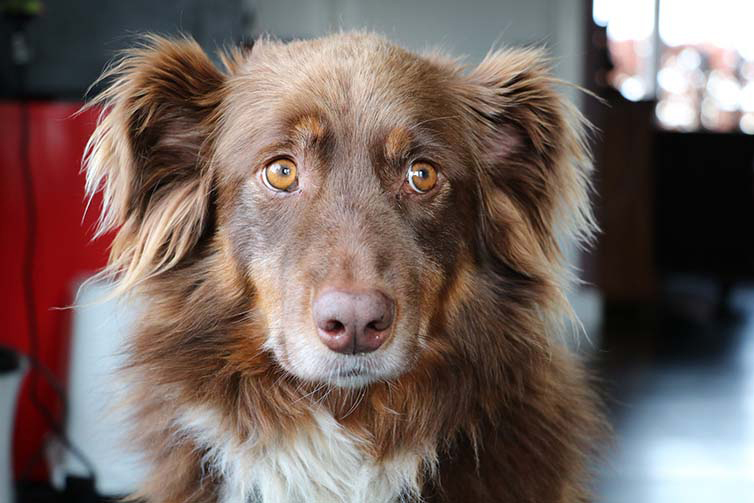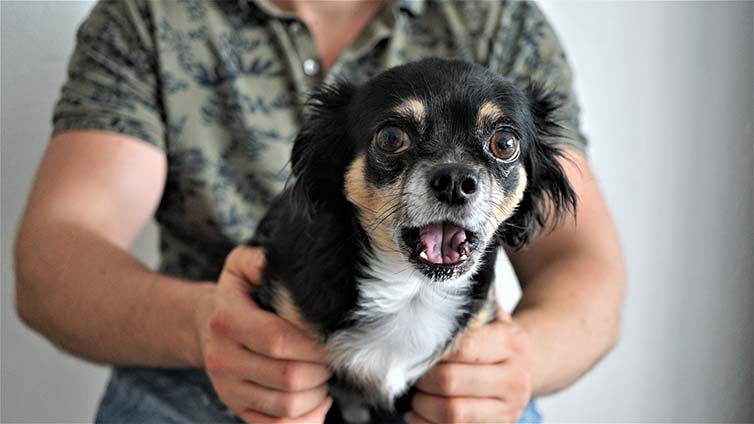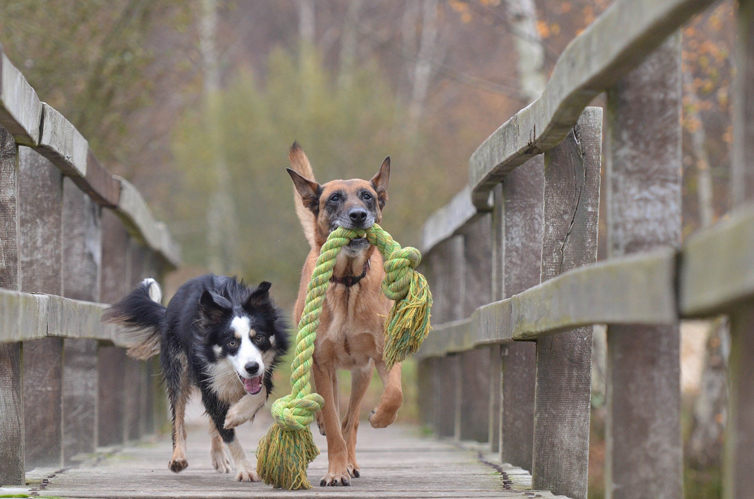Can My Doggie Really Love Me?
Any dog lover and/or owner would have no hesitation in answering this question; they would no doubt answer with a resounding ‘Yes!’ They would cite examples of their own and other doggie folks’ experiences of how dogs love them so much that they seem to be upset when their owner leaves them at home and bound with excitement when the owner returns. This must be love, right? Or is it possibly, cynics might respond, because their human mom or dad is, apparently, a never-ending source of food?

Historical Perspective
In the far-distant past, people tended to assume that dogs had feelings very much the same as ours, but one theory is that with the start of scientific discovery and humans’ emerging ability to build complex machines, people realized that all living things were based on systems, subject to laws, physics and chemistry. Then certain religions began to suggest that people have immortal souls because they have consciousness and feelings. It wasn’t a huge step from this assumption to believing that animals have no souls and therefore no feelings. Scientists and scholars jumped on this band-wagon and tended to agree. Some compared dogs, and other animals, to machines, without consciousness and emotions, which can be programmed to act in certain ways.
We’re sure that you have lots of questions about this fascinating and controversial topic, so let’s anticipate those questions and try to answer them.
What does science have to say about this?

Fortunately for us, and our canine companions, science has come a long way since dogs were seen as machines. Dogs’ brains have similar structures to ours, which create emotion. They have the same hormones which produce these emotions and their brains go through the same chemical changes as ours when they feel, excitement, fear, anxiety and, yes, love. When humans experience love they produce the hormone oxytocin; so do dogs, believe it or not! However, even though dogs can experience emotions similar to ours, there are obviously some differences.
Scientific research has shown that babies do not have the full range of emotions experienced by adults. It takes some years for these to develop. Additionally, not all adult humans have the same range of emotions. Research has shown (Coren, 2013) that the mind of a dog is roughly equivalent to the mind of a two to a two-and-a-half year-old child, in terms of mental processes and emotions. Like a young child, dogs also have emotions but fewer than those found in adults.
How do feelings develop in human infants, compared to dogs?

When a human infant is born, he/she has only one emotion which covers, for example, contentment. The baby may be extremely happy with a full tummy and a clean nappy, ranging to beginning to be a bit bored. Only in the next few months will all the emotional states begin to emerge. In fact, research shows (Coren, 2013) that the infant does not experience joy until around six months of age. ‘Love’ does not appear until nine or ten months of age. The child may be almost four years old before he/she experiences contempt.
So, what does this have to do with dogs?

Dogs go through their developmental stages far quicker than humans. In fact they have all their range of emotions by the time they are 4-6 months old. They will never acquire the range of emotions which the human infant will acquire, but they will develop the basic emotions, like fear, joy, disgust, anger and, yes, love, but they will never develop more complex emotions like guilt, shame and pride. When we see a highly-trained dog receiving a trophy for the award of ‘Best in Show’ at a dog show, he/she may be very happy at all the attention they are getting, but they are unable to experience the feeling of pride. Their owners, on the other hand, may feel pride ‘on their behalf’.
Yes, but when my dog steals food off the table, he experiences and shows guilt. Isn’t that an exclusively-human emotion?

It’s more likely that what your dog is experiencing is fear. He knows from past experience that when he steals food, you are likely to shout at him. So when he slinks around with his tail between his legs, literally, he is anticipating that he’ll very soon hear the dreaded words “Bad dog!”
Can dogs ‘catch’ or copy their human owners’ emotions?
Professor Clive Wynne, director of the Canine Science Collaboratory at Arizona State University, believes that the emotional connection between humans and dogs is “the essence of the relationship”. New studies show that dogs can pick up chemical and behavioural cues from humans, enabling them to ‘catch’ feelings such as anger, excitement and fear. Dogs view their environment as safe and secure when their humans project feelings of confidence and calm. Our stress and anxiety can cause our canine friends to become stressed and anxious.
How can we tell which emotions our dogs are feeling?
We often pick up the emotions that our pooches are feeling. For example, when we arrive home, our dogs may bark and leap about, expressing their excitement and joy at our arrival. When strangers pass our gate, our dog may bark in a threatening way as he/she expresses their anger at the possibility of a threat to their ‘ownership’ of their territory. However, as we have previously explained, a prize-winning dog who wins a ‘Best in Show’ award at a dog show, may feel very happy with all the attention he/she is getting, but, contrary to popular opinion, they are unable to feel pride.
As dogs will never learn to communicate with language, in order to interpret their emotions we need to understand their ‘language’: body language. There are some visible markers which help us to pick up their emotions:
Happiness or Excitement

- Ears upright or flattened or a combination of the two
- Relaxed body posture
- Bounding about or humping
- Tail high or in a relaxed position
- A relaxed or open mouth, sometimes interpreted as ‘smiling’
Discomfort or Anxiety

- A tucked-under or lowered tail
- Yawning, lip-licking or panting
- No eye contact
- Attempting to move away from the situation causing the discomfort
Uncertainty
This may occur when your poochie is not sure how to respond to a certain situation, like meeting a new dog or new human.
- Humping
- Lip licking or yawning
- Holding up a paw while watching, greeting or approaching
- Rolling onto his/her back, exposing the belly
- Avoiding eye contact
Fear
An unfamiliar or scary environment may elicit this kind of body language. Loud noises such a fireworks, (which most dog owners understandably loathe), thunder, strangers and dogs who come too close, may be triggers.

- Flattened ears
- Hair standing on end: mainly on the back
- Avoiding eye contact or turning the head away or ‘whale eye’ when the whites of the eyes are showing
- Tense, crouched body
- Shaking
- Tail tucked under
- Hiding
- Lip-licking
Extreme Fear or Self-Defense

When a dog feels that he/she has to defend themselves, they may feel fear and aggression. Their body language may appear to convey aggression or even excitement. Some dogs exhibit the signs of extreme fear at protracted loud noises such as fireworks. They may resort to chewing on doors and fences or leaping into swimming pools (Some dogs actually drown.) in a desperate attempt at getting away from the noise, which is painful to their ears.
- Lips pulled back into what may be interpreted as a ‘smile’
- Teeth baring
- Staring at the aggressor – unwillingness to turn away
- A tense or crouched body
- Hair standing on end
- Ears alert, upright and tense
- Tail elevated or tucked under
Alertness

- Eyes open and bright
- Ears forward showing that they are listening to certain sounds
Vulnerability

This tends to happen when the dog perceives a threat from, for example, a bigger dog.
- Rolling on their backs to expose their bellies
- Ears back
Playfulness

- Tail wagging
- Front legs lowered in a ‘crouch’
- Eyes open and bright
- Ears up and tail down
What about dogs’ facial expressions?

Researchers have developed a way of associating certain canine facial expressions with emotions. Some researchers have used infrared thermography to look at changes in temperature in different situations. It tends to drop when dogs are anxious and goes up when their owner returns
- Muscles around the eyes can express attention, sadness or concern.
- The eyebrow on the left side of dogs’ faces is more active when dogs see their owners. (It is possible that this is because, being on the left, it corresponds to the right hand side of the brain, controlling emotional expression.)
- The speed of your dog’s tail wagging increases the longer you have been away!
So can dogs recognize other dogs’ and humans’ emotions?
A scientific study was done in 2016 in the U.K. which found that ‘…domestic dogs can obtain dog and human emotional information from both auditory and visual inputs and integrate them into a coherent perception of emotion.’ (royalsocietypublishing.org) In other words, yes; dogs can recognize humans’ and dogs’ emotions from sound cues and body language.
In the study, 17 dogs were presented with human and dog faces showing different emotions, together with the appropriate vocal sound to accompany the face. The study explained that the recognition of facial expressions is important in dogs because they need to be able to ‘read’ emotion in other dogs and in humans to evaluate the ‘social intentions and motivations’ of others, in order to decide what action, if any, to take.
And finally…
Now you know that you were not just imagining that the facial and body language of your pooch indicated some of their emotions. However, we should not get too carried away with this. That ‘slinking’ away when you yell: “Who is responsible for stealing the meat from the kitchen counter?” is probably just a fear response to your shouting and not, as we often like to believe, a guilt response.
Sources:
Psyschologytoday.com ‘Which emotions do dogs actually experience?’ Coren, 2013
National geographic.com ‘Yes, dogs can catch their owners’ emotions.’ Colino, 2021
Royalsocietypublishing.org ‘Dogs recognize dog and human emotions.’ Albuquerque et al, 2016
ZA-NON-220100008


